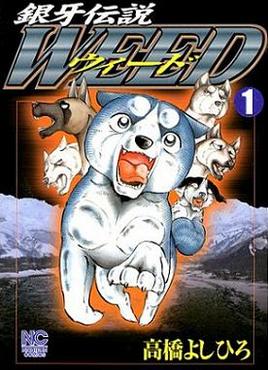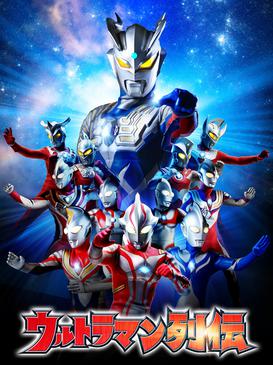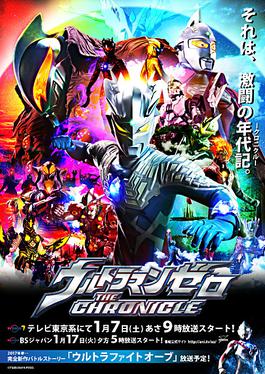This article needs additional citations for verification .(January 2021) |
This article chronicles the releases associated with the long running novel, manga and anime series Legend of the Galactic Heroes .
This article needs additional citations for verification .(January 2021) |
This article chronicles the releases associated with the long running novel, manga and anime series Legend of the Galactic Heroes .
Yoshiki Tanaka is a Japanese novelist.

Legend of the Galactic Heroes, sometimes abbreviated as LOTGH, LOGH, LGH or Gin'eiden (銀英伝) in Japanese, is a series of epic science fiction novels written by Yoshiki Tanaka. In humanity's distant future, two interstellar states – the monarchic Galactic Empire and the democratic Free Planets Alliance – are embroiled in a never-ending war. The story focuses on the exploits of rivals Reinhard von Lohengramm and Yang Wen-li, as they rise to power and fame in the Galactic Empire and the Free Planets Alliance, respectively.

Legend of Crystania is a Japanese media franchise of RPGs, novels, anime and manga by Ryo Mizuno and Group SNE. The novels by Mizuno and others were published from 1993 to 2002, based on Mizuno's RPG "replays" serialized in the Japanese magazines Comptiq and later in Dengeki-Oh from November 1989 to January 1998 issues.

Weed, known in Japan as Ginga Densetsu Weed is a Japanese manga series written and illustrated by Yoshihiro Takahashi. It is a sequel to Takahashi's 1980s manga Silver Fang, and focuses on Weed, a dog, the son of Gin, the original series' protagonist. Weed, named after the English word for wild plant, leaves his birthplace to search for his father in the Ōu Mountains. Upon arriving, Weed immediately begins protecting Ōu and its soldiers from dangerous threats. As the series progresses, Weed and his allies journey throughout Japan, aiding those in need and preventing takeovers.
The Legend of Heroes, known in Japan as Eiyū Densetsu, is a series of role-playing video games developed by Nihon Falcom. First starting as a part of the Dragon Slayer series in the late 1980s, the series evolved into its own decade-spanning, interconnected series with seventeen entries, including several subseries. All games in the franchise released since 2004 are part of the Trails subseries, known as Kiseki in Japan. The most recent entry, The Legend of Heroes: Kai no Kiseki, was released in September 2024.

Noboru Ishiguro was a Japanese anime director, anime producer, and animator. He was the founder and chairman of the animation studio Artland.

Yoshihiro Takahashi is a Japanese manga artist. He writes under a pen name in which his first name Yoshihiro is spelled out in hiragana (よしひろ).
Ryu Fujisaki is a Japanese manga artist from Mutsu, Aomori Prefecture.
Haruka Takachiho is a Japanese science fiction author and founder of Studio Nue. Takachiho is best known as the creator of Crusher Joe, Dirty Pair and Dirty Pair Flash. Helen McCarthy in 500 Essential Anime Movies called him one of Japan's leading pulp novelists

The Legend of Heroes III: Song of the Ocean is a 1999 role-playing video game developed by Nihon Falcom. It is the fifth game in The Legend of Heroes series, and the third and final title in the Gagharv Trilogy. It was originally released for Windows and was remade for the PlayStation Portable in 2006.

Dragon Slayer: The Legend of Heroes is a 1989 role-playing game developed by Nihon Falcom. It is the sixth game in the Dragon Slayer series and the first in The Legend of Heroes franchise.

Dragon Slayer: The Legend of Heroes II is a 1992 role-playing video game by Nihon Falcom. It is part of the Dragon Slayer series and the second entry in The Legend of Heroes subseries. The game first released for the NEC PC-8801 before being ported to the NEC PC-9801, FM Towns, PC Engine, Mega Drive, Super Famicom and MS-DOS.

Record of Lodoss War is a franchise of fantasy novels by Ryo Mizuno based on the work he originally created for a world called Forcelia as a rules-free setting for role-playing games (RPGs). There have since been multiple manga, anime and video game adaptations, several of which have been translated into English. The plots generally follow the conventions and structure of the RPG systems including Dungeons & Dragons and Sword World RPG, in which several characters of distinct types undertake a specific quest.

Ginga Sengoku Gun'yūden Rai is a Japanese manga series written and illustrated by George Manabe. It was first serialized in Kadokawa Shoten's Comic Comp Magazine beginning November 1989 up to January 1993. The series transferred publication to MediaWorks's Dengeki Comic Gao! magazine from February 1993 to November 2001. The series focuses on Rai Ryuga, a young courageous warrior who seeks to unify the cosmos in a war against other two powerful forces. The series borrows heavily from events of the Sengoku period and events from the Chinese historical novel Romance of the Three Kingdoms.
Katsumi Michihara is a Japanese illustrator and manga artist. She is most notable for creating the manga adaptations of Yoshiki Tanaka light novels, Legend of the Galactic Heroes, as well as illustrating the Tokuma Shoten release of Tytania, and for the yaoi series Ai no Kusabi. She won the 21st Seiun Award for best art in 1990.

Ultraman Retsuden is a biography series produced by Tsuburaya Productions created to commemorate the 45th anniversary of the Ultra Series. The show first premiered on TV Tokyo on July 6, 2011 and was in syndication for two years. The show features clips from past Ultra Series shows. The catchphrases for the series are "Let's Schwatch together in front of the television at 6 o'clock on Wednesday!" and "Kindness and courage to you!".
Chara is a Japanese bi-monthly Yaoi/Shōjo manga magazine published by Tokuma Shoten. First released in 1994, the magazine has since been adapted into two different spinoffs.

The Legend of Heroes: Trails at Sunrise, known in Japanese as Akatsuki no Kiseki, is a 2016 role-playing gacha game developed by UserJoy Technology and published by Nihon Falcom. It is a spin-off of the Trails series, itself a part of The Legend of Heroes franchise, and was first released in Japan for browsers. Trails at Sunrise was later ported to Windows, PlayStation Vita, PlayStation 4, Android, iOS, and Nintendo Switch. The PlayStation and Switch versions were discontinued in 2022.

Ultraman Zero: The Chronicle is a biography series produced by Tsuburaya Productions created to commemorate the 50th anniversary of Ultra Seven. This show follows a format similar to Ultraman Retsuden, and continues to feature Ultraman Zero as the show's main navigator, bringing the viewers to movies and miniseries that featured his major involvement. Before its official airing in 2017 in Japan, it was shown in Malaysian television channel Astro Ceria starting from April 10, 2015 in Malay.